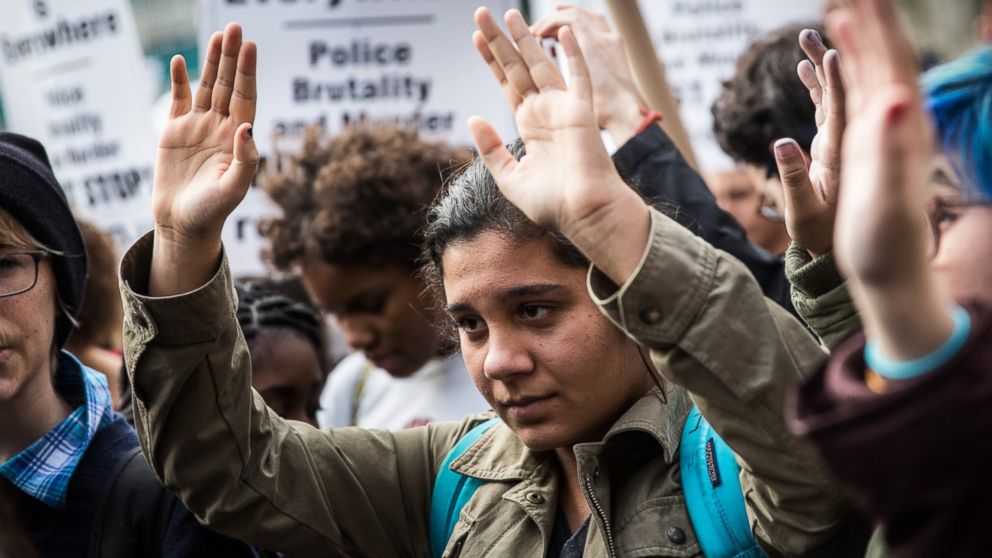Given these circumstances, students’ recent response, walking out of class and into the streets, is not just notable, but an act of bravery and defiance. It points towards the refusal of the exploitative and oppressive conditions within schools. On December 1st, one week after the release of the Darren Wilson verdict, hundreds of students from several different high schools marched out from as far as Queens and South Brooklyn to join together at Union Square. Since then, schools such as John Jay in Park Slope, Brooklyn Technical High School in Fort Greene, Henrick Martin Institute in Manhattan, and various small schools in the Bronx have had marches and rallies outside their own schools in the streets, or to local choke points, such as Brooklyn Tech’s march to Barclay’s Center, a large intersection which has become a flashpoint for street blockades in Brooklyn. As recently as the day before this text was written (12/9/14), students in an East Village School defied orders by the DOE and led a march to the Brooklyn DA’s office, mostly by themselves with just a few supportive parents.
So far the content of the youth walkouts have primarily focused on human rights and the end to police violence, and conditions at individual schools have not been taken up on a broad scale (to the best of the authors’ knowledge). However, just by working together against the system, students are already breaking down the hierarchy they face on a daily basis. On Facebook, students debated for the December 1st walkout whether to leave during class or after; would be more effective to disrupt class, or not? Students are practicing their own forms of from-below democracy, and are rejecting the top-down discipline they are subjected to daily.
Similarly, in the streets protesters have stopped responding to orders to disperse, instead linking arms and chanting “stay together.” In a society that currently relies on competition between individuals, the protests in the streets and walkouts from schools are a strong departure from the top-down domination and internal division that we often feel in our day-to-day lives. By the very act of coming together, at times even despite the threat of state-sponsored violence, we are building a new world to inhabit. People have shown that their resistance will not die down. Even if on the surface these protests appear to be or someone else’s life, we are nonetheless creating the conditions to change our own.
Read More | "Reproducing Ourselves for a New Society: Fighting the Police at School and in the Streets" | Florence Johnson Collective
